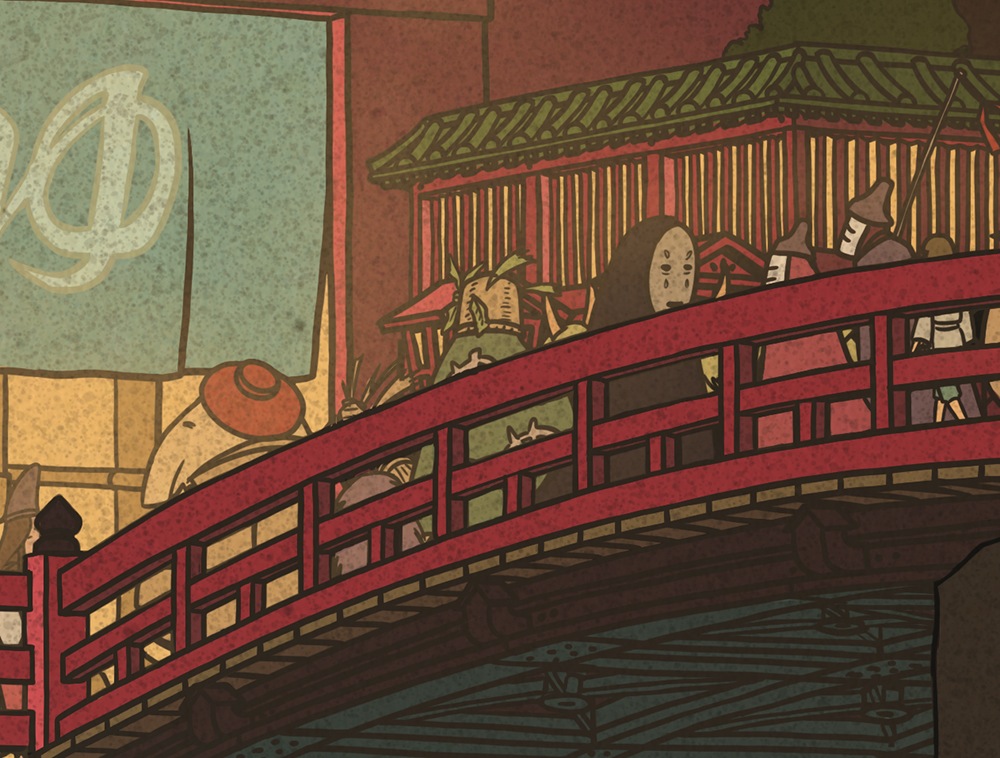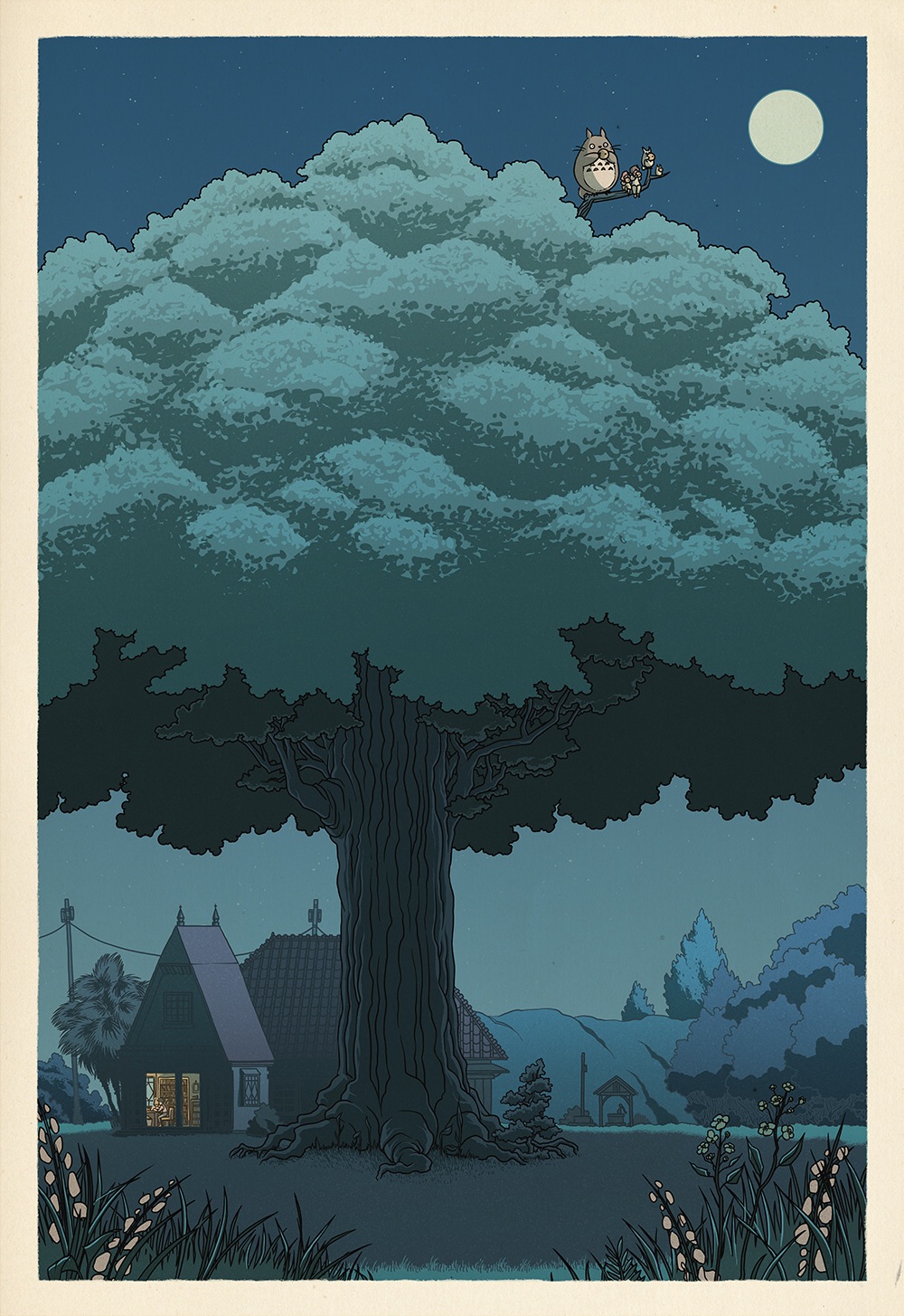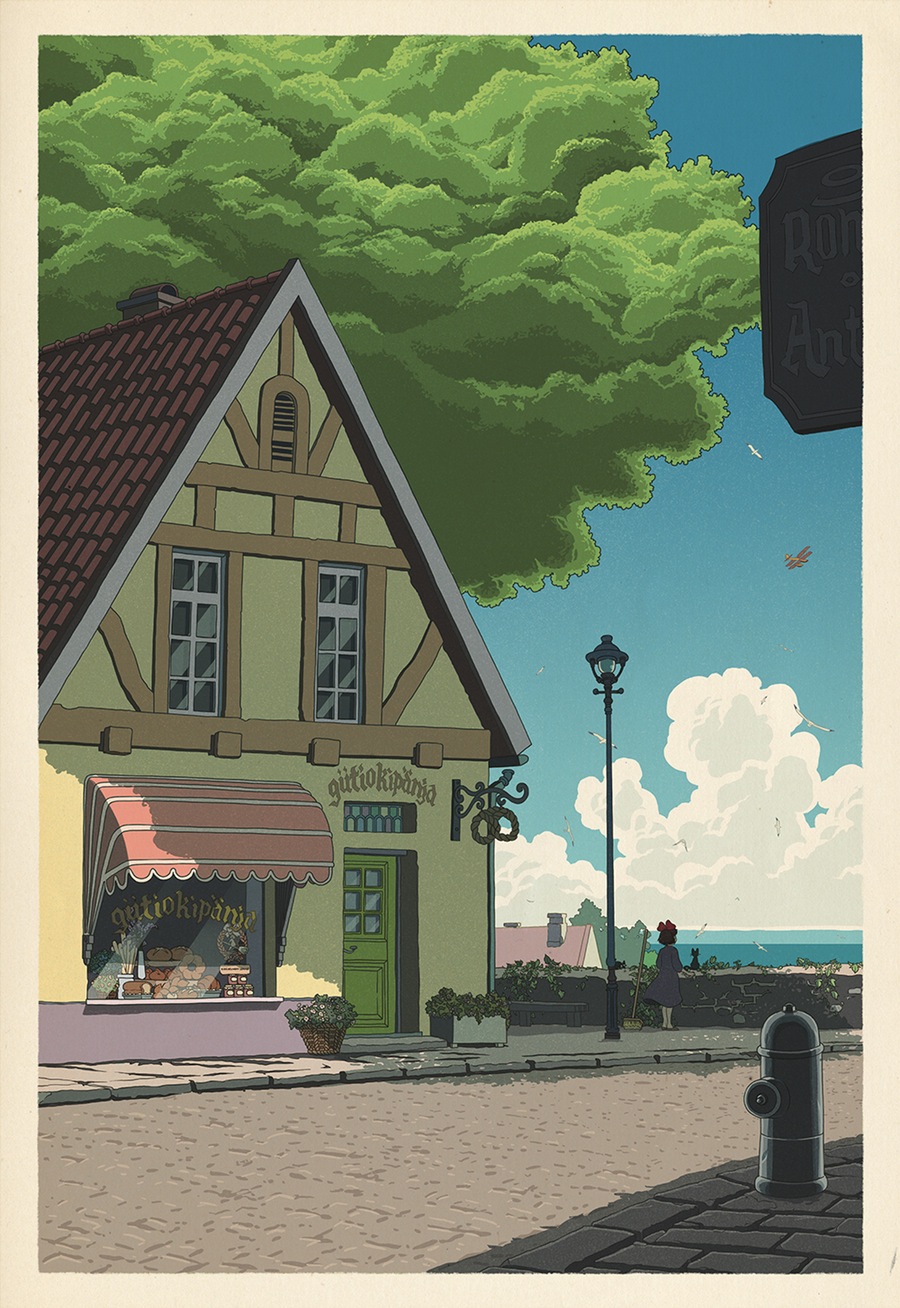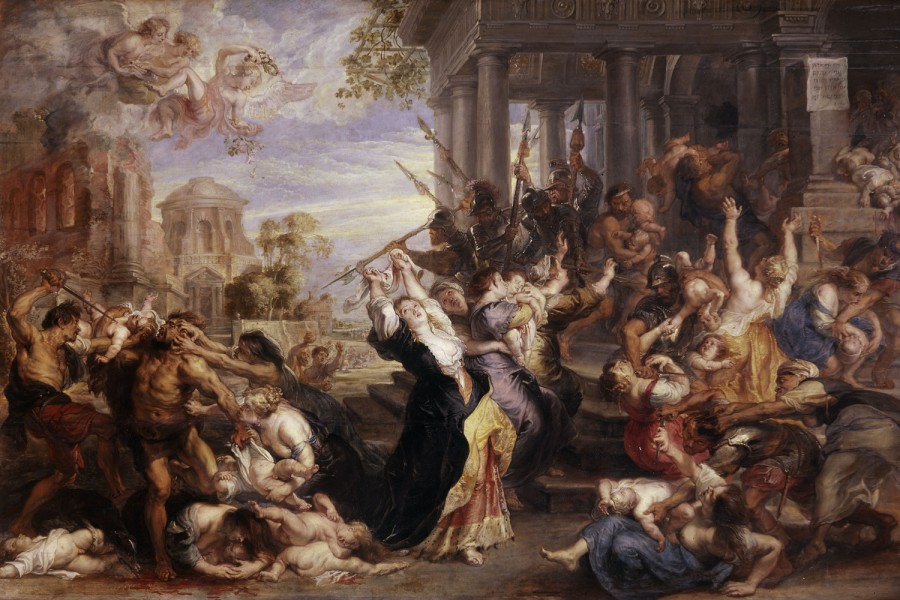
Like illustrator Bill Mudron, I’m drawn to the backgrounds of director Hayao Miyazaki’s animated features. The shadowy landscapes and traditional wooden houses exert a tonic effect, even as giant many-eyed insects roam free and curses turn parents into pigs. The characters can become a bit cloying (especially when dubbed for English-speaking audiences), but I’ll never tire of watching that cat bus charging through the Japanese countryside.
Mudron’s take on six of Miyazaki’s most fertile landscapes, including Spirited Away’s bathhouse, above, were rendered entirely in Photoshop, but aesthetically, they’re of a piece with artist Kawase Hasui’s late-19th and early-20th century woodblock prints. (You can purchase Mudron’s prints and support his work here.)
Mudron told The Creators Project that his project was born of reading a two-volume book on Hasui, right after seeing The Kingdom of Dreams and Madness, Mami Sunada’s documentary about Miyazaki’s Studio Ghibli.
Taking his lead from the figures in Hasui’s shin-hanga (“new prints”), Mudron makes Miyazaki’s characters wholly subordinate to their setting. It’s pretty hard to ignore the weird spirits thronging the bridge that leads to the bathhouse when watching the film of Spirited Away, but Mudron succeeds by pinning them to a single moment in time and shifting the focus to their destination.

Study the above detail from “Night Falls on the Spirit Realm.” There’s still a lot going on on that bridge, but relative to the big picture at the top of the page, these spirits are as anonymous as the umbrella toting figures in Hasui’s “Snow at Heian Shrine, Kyoto,” below.

Scroll down for Muldron’s view of iconic locations from My Neighbor Totoro, Kiki’s Delivery Service, and Princess Mononoke.



Related Content:
Hayao Miyazaki’s Magical Animated Music Video for the Japanese Pop Song, “On Your Mark”
Watch Sherlock Hound: Hayao Miyazaki’s Animated, Steampunk Take on Sherlock Holmes
Ayun Halliday is an author, illustrator, and Chief Primatologist of the East Village Inky zine. Follow her @AyunHalliday


